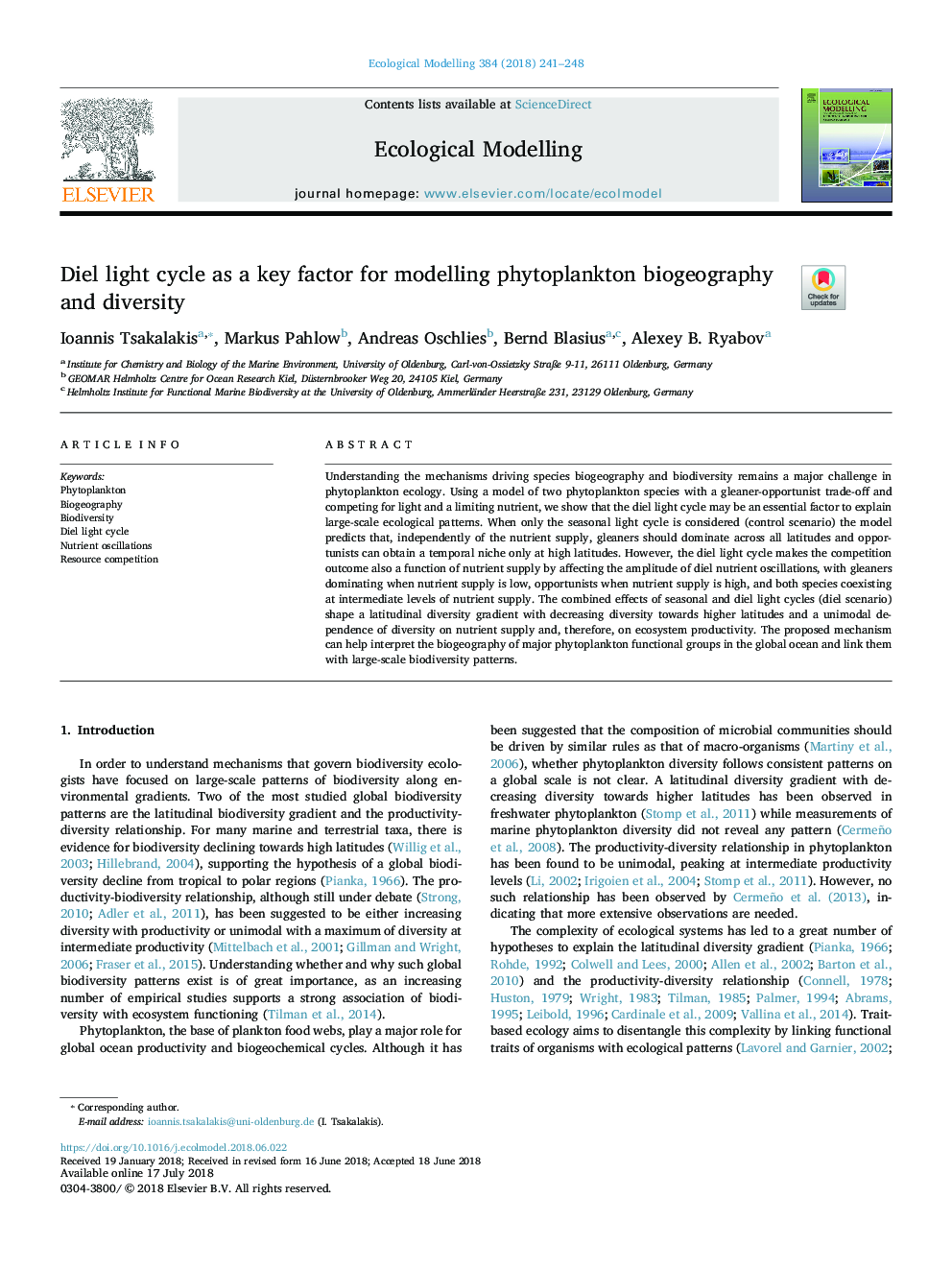| Article ID | Journal | Published Year | Pages | File Type |
|---|---|---|---|---|
| 8846006 | Ecological Modelling | 2018 | 8 Pages |
Abstract
Understanding the mechanisms driving species biogeography and biodiversity remains a major challenge in phytoplankton ecology. Using a model of two phytoplankton species with a gleaner-opportunist trade-off and competing for light and a limiting nutrient, we show that the diel light cycle may be an essential factor to explain large-scale ecological patterns. When only the seasonal light cycle is considered (control scenario) the model predicts that, independently of the nutrient supply, gleaners should dominate across all latitudes and opportunists can obtain a temporal niche only at high latitudes. However, the diel light cycle makes the competition outcome also a function of nutrient supply by affecting the amplitude of diel nutrient oscillations, with gleaners dominating when nutrient supply is low, opportunists when nutrient supply is high, and both species coexisting at intermediate levels of nutrient supply. The combined effects of seasonal and diel light cycles (diel scenario) shape a latitudinal diversity gradient with decreasing diversity towards higher latitudes and a unimodal dependence of diversity on nutrient supply and, therefore, on ecosystem productivity. The proposed mechanism can help interpret the biogeography of major phytoplankton functional groups in the global ocean and link them with large-scale biodiversity patterns.
Related Topics
Life Sciences
Agricultural and Biological Sciences
Ecology, Evolution, Behavior and Systematics
Authors
Ioannis Tsakalakis, Markus Pahlow, Andreas Oschlies, Bernd Blasius, Alexey B. Ryabov,
